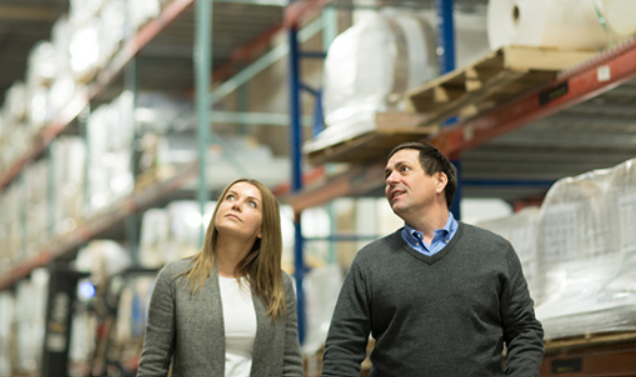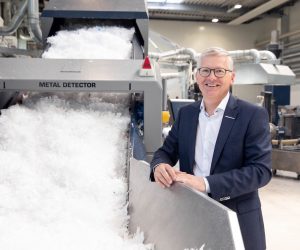

Accounting for climate in packaging
By Clint Smith, Senior Director of Sustainability at Pregis and Mauro Cozzi, co-founder of Emitwise
Back in 2019, Amazon and Global Optimism joined forces to provide an opportunity for companies to join a community of leading businesses committed to action on climate change. When the world’s largest online retailer makes a move like this, supply chains take notice. This was part of the impetus for why Pregis, a leading global manufacturer of protective packaging, made a commitment to becoming net zero by 2040.
The Climate Pledge is a relatively new, voluntary net zero pledge. However, its demanding reporting regime, which incorporates both direct and indirect emissions, has prompted an industry-wide conversation about how supply chains can genuinely reduce climate emissions to reach net zero 10 years ahead of the Paris Agreement.
It is clear that the packaging sector must play a key role in a net zero retail sector, it connects a vast array of retailers and suppliers directly to consumers. That is why, in April 2021, Pregis became one of the first 100 companies to commit to being net zero by 2040. The Carbon Pledge symbolises a new level of public accountability for carbon emissions. To meet this new standard, Pregis uses carbon accountancy software Emitwise to accurately measure and report its greenhouse gas emissions, freeing-up its sustainability leaders to implement decarbonisation strategies and innovations to drive real impact.
Investment in sustainability means investment in customers
Pollution and waste have captivated consumers’ thinking on sustainability for the last decade or more. Growing exposure to the climate crisis is now significantly influencing consumer trends. A recent study of more than 1,100 US-based online shoppers revealed that sustainable packaging is now the key driver for consumers when deciding who to shop with, especially for luxury products.
In the last 18 months, as the urgency of the climate crisis hits home, carbon literacy has increased dramatically. This puts greater pressure on brands to address packaging emissions, triggering a wave of innovations and industry commitments. For example, Pregis has pledged to make 100% of their products recyclable, reusable or with 30% reduced reliance on new fossil-based ingredients by 2030. The reduction will come in the form of using increased recycled, renewable and bio-based resources.
Additionally, major downstream companies, such as Amazon, Zalando, Walmart and others, now demand effective carbon accounting and bold climate action from their suppliers. For packaging companies to meet the high standards set by consumers and retailers, clear and rigorous measures are essential to ensure that carbon emissions are properly accounted for.
Scope 3 emissions: The new frontier for sustainable packaging.
For most packaging leaders, the ‘low hanging fruit’ of their carbon footprints lie in the manufacturing process or waste management system. These Scope 1 and 2 emissions are relatively straightforward to identify and address.
However, the limited range of Scope 1 and 2 emissions means that the majority of emissions are missed. Up to 90% of the carbon footprint of packaging is caused by entities beyond the direct control of firms. These Scope 3 emissions may be produced by suppliers and customers well before the packaging format product has been developed, or after it has been used by the customer. However, to meet the new demanding expectations of a carbon literate consumer base, firms must now go beyond Scope 1 and 2 emissions, to measure the true environmental impact of packaging – from cradle to grave. This is now one of the top issues driving action among climate-aware companies, alongside other key factors such as the increasing finitude of raw materials.
Unlocking Scope 3 carbon accounting
Data is the key to unlocking Scope 3 carbon accounting. With it, we are able to improve insights over time. As more companies commit to data disclosures, the accuracy of Scope 3 accounting improves, enabling us to better understand climate risk across the supply chain. By auditing the supply chain, firms can understand which suppliers are producing the most emissions and take action by engaging suppliers to understand challenges and opportunities.
Machine learning allows firms to absorb the vast complexity of a global value chain, apply algorithms to analyse data, learn from it and make predictions that create real impact. Once a baseline has been measured and aligned with global regulations, machine learning can dynamically assess carbon exposure ‘hotspots’ and set controls to mitigate emissions. This moves corporates beyond operational decision-making into a strategic role – embedding carbon emission awareness into the decisions made throughout the business, from suppliers to acquisitions.
Data is also the universal language to show progress to customers. Increasingly packaging firms are signalling the sustainability credentials of their products to earn the trust of consumers, underpinned by clear carbon footprint data, creating competitive advantage.
Protecting margins while partnering to diffuse climate-friendly innovation
Diffusion of innovation, from advanced materials to automation, is vital to reconfiguring the packaging sector – and all sectors – around a global net-zero economy. However, innovation represents risk and capital cost. So how can firms square the additional risk and capital cost of shifting to Industry 4.0?
Packaging is a solutions business. Sustainable solutions must be continually innovated by packaging companies to meet the demands of the wider market. However, it’s important to realise that not all packaging innovations require capital projects. In fact, by collaborating with partners across the supply chain, there are many opportunities to co-develop solutions to drive efficiency – from sharing materials, or machinery, or transport. Collaboration, underpinned by data, unlocks opportunities for sustainability and efficiency.
As we embark on the journey to net zero targets, we must now look at the whole picture: the cost and risk of carbon to all players, future materials shortages, and the opportunity to drive clean growth through premiumisation by meeting the demands of carbon-conscious consumers.
Clear data disclosure across the supply chain is vital to increasing trust between retailers and packaging suppliers – both need to understand the journey, and the work needed to reach the destination. By building trust in this way, the path to net-zero will strengthen relationships.
By shifting the mindset in packaging from quick wins to long-term sustainability strategies, a range of opportunities are on offer. From achieving a new level of engagement with customers, to deploying machine learning and automation to build stronger, greener value chains, Scope 3 accounting allows first movers to seize the initiative in the net zero retail sector of the near future.





